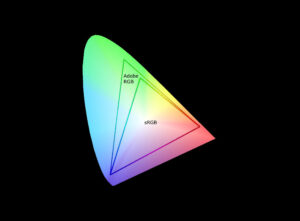In a significant development for analog photography enthusiasts, Fujifilm has announced the resumption of its color negative film production in China. This revival, facilitated through a new partnership with Yes!Star, marks the return of Fujicolor C200 and Fujicolor C400 to the market. The move is poised to meet the increasing demand for traditional film photography, a medium that has seen a resurgence in recent years. I for one am excited. I miss real Fuji Films and was disappointed when they started to get discontinued. Now it seems they might just be coming back.
Technical Insights and Future Prospects for Analog Photography
The Official Announcement: Inheriting the Classics, Reigniting the Passion
On June 21, 2024, Fujifilm hosted a color film launch event in Nanning, Guangxi, under the theme “Inheriting the Classics, Reigniting the Passion.” This event heralded the comeback of Fujicolor C200 and Fujicolor C400, two beloved film stocks. The production will be handled by Guangxi Giant Star Medical Equipment Co. Ltd., also known as Yes!Star. This company has a rich history with Fujifilm, previously producing medical films and handling OEM production of Fujifilm’s high-gloss materials.
Yes!Star is a key player in the Chinese medical film industry, and this partnership underscores Fujifilm’s commitment to leveraging established expertise to revive its classic film stocks. The announcement has been met with enthusiasm, though some skepticism persists regarding the authenticity of the film production processes.
The Future: Hopes for Fujicolor Superia X-TRA400 and Pro 400H
While the current focus is on Fujicolor C200 and Fujicolor C400, there is a palpable hope that other classic films like Fujicolor Superia X-TRA400 and Fujicolor Pro 400H will also be revived. Superia X-TRA400, with its high-speed and fine grain, was a staple in the 1990s for photojournalism and general use. Pro 400H, known for its professional-grade quality, is especially favored in wedding and portrait photography.
The return of these films would not only satisfy the nostalgia of seasoned photographers but also introduce a new generation to the magic of analog photography. The demand for these films underscores the enduring value of traditional photographic techniques in an increasingly digital world.
Addressing Skepticism: Original Recipes vs. Rebranding Concerns
Despite the excitement surrounding this announcement, there are concerns within the analog community about the authenticity of the revived films. Photos circulating on Reddit suggest that the new production facility might merely be finishing Kodak master rolls rather than producing the emulsion from scratch. This speculation has led to fears that Fujicolor C200 and Fujicolor C400 might just be rebranded versions of Kodak films, similar to the previously rebranded Kodak Ultramax 400 in the U.S.
For many enthusiasts, the unique look and behavior of original Fujifilm recipes are irreplaceable. The original formulas of Fujicolor films are celebrated for their distinctive color palettes and characteristics, which are not replicable by mere rebranding. The community hopes that Fujifilm will stay true to its heritage and deliver films with their authentic recipes.
Technical and Historical Significance of Fujicolor Films
Fujicolor C200
Is renowned for its versatility and exceptional color reproduction. It is designed to perform well in various lighting conditions, making it suitable for both outdoor and indoor photography. This was my review and test of C200.

Key technical specifications include:
- ISO 200: Offers a balance between sensitivity and grain.
- Film Sizes: Available in 135 format with 36 exposures.
- Enhanced Skin Tones: Ideal for natural-looking portraits.
- Refined Sharpness: Delivers image quality akin to ISO 100 films.
- Wide Exposure Latitude: Ensures consistent results across diverse daylight conditions.
Fuji C200 Samples









Fujicolor Superia X-TRA400
Though not confirmed for re-production, remains a highly valued film for its high-speed performance and fine grain structure. It is suitable for a wide range of photographic situations, from low light environments to fast action shots. My review.
Ribsy gives a great review worth checking out:

Key features include:
- ISO 400: High sensitivity for various shooting conditions.
- Film Sizes: Available in 135 format with 36 exposures.
- Excellent Skin Tones: Produces clear and beautiful people shots.
- Fine Grain: Maintains quality even when enlarged.
- High-Speed Performance: Suitable for both indoor and outdoor photography.
Fuji Superia X-TRA400 Samples









Fujicolor Pro 400H
Another iconic film, highly regarded for professional applications such as wedding, portrait, and fashion photography.

Its technical prowess includes:
- ISO 400: Combines higher effective film speed with fine grain.
- Film Sizes: Available in 135 format with 36 exposures and 120 format with 12 exposures.
- Superb Skin Tone Reproduction: Offers smooth gradation from highlights to shadows.
- Three-Dimensional Appearance: Provides a realistic rendering with controlled saturation.
- Faithful Color Reproduction: Ensures accurate rendition of various lighting conditions.
Fujicolor Pro 400H Samples






The Role of Yes!Star in Film Production
Yes!Star, officially known as Yestar Healthcare Holdings Company Limited, plays a crucial role in this revival. As a leading entity in the high-margin medical consumables and equipment sector in China, Yes!Star has a longstanding partnership with Fujifilm. The company’s expertise extends to manufacturing and distributing Fujifilm’s medical and photographic products, making it a strategic partner for this venture.
Conclusion: A Bright Future for Fujifilm and Analog Photography
Fujifilm’s decision to revive color film production in partnership with Yes!Star represents a significant milestone in the world of analog photography. While the initial focus is on Fujicolor C200 and Fujicolor C400, the hope remains for the reintroduction of other iconic films like Fujicolor Superia X-TRA400 and Fujicolor Pro 400H.
This revival is not just about nostalgia; it is about preserving the unique qualities of analog film that digital photography cannot replicate. The distinctive color reproduction, grain structure, and overall aesthetic of Fujifilm’s classic films continue to inspire and captivate photographers worldwide. As Fujifilm reignites its passion for film, the future looks bright for analog photography enthusiasts.
What about Velvia? Or Provia?
Will Yes!Star be making Velvia or Provia as well? These are slide films. And difficult to shoot. Different chemistry to C41 Negative Films. Let’s wait and see.







































































